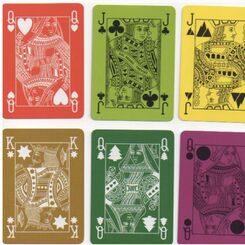Lombardy (or Milanesi) pattern
The origins of the Lombardy pattern probably lie in the early 19th century when it was a full-length design. It has some affinities with the French Provence and Lyons patterns which are now obsolete.
The origins of the Lombardy pattern, also referred to as Milanesi, probably lie in the early 19th century when it was a full-length design. Nowadays it is invariably double-ended. This pattern is also known in Ticinese in Italian speaking Switzerland which, until 1803, was part of the Duchy of Milan. The cards are French-suited, elongated and narrow, and their design is reminiscent of several used in eighteenth century south and south-eastern France (i.e. Provence and Lyons patterns which are now obsolete).

Above: double-ended Lombard pattern pack by S.D. Modiano, c.1929. 40 cards A - 7, J, Q, K. "Regno D'Italia - Lire Tre" tax stamp "Dic. 1929" on Ace or Hearts.
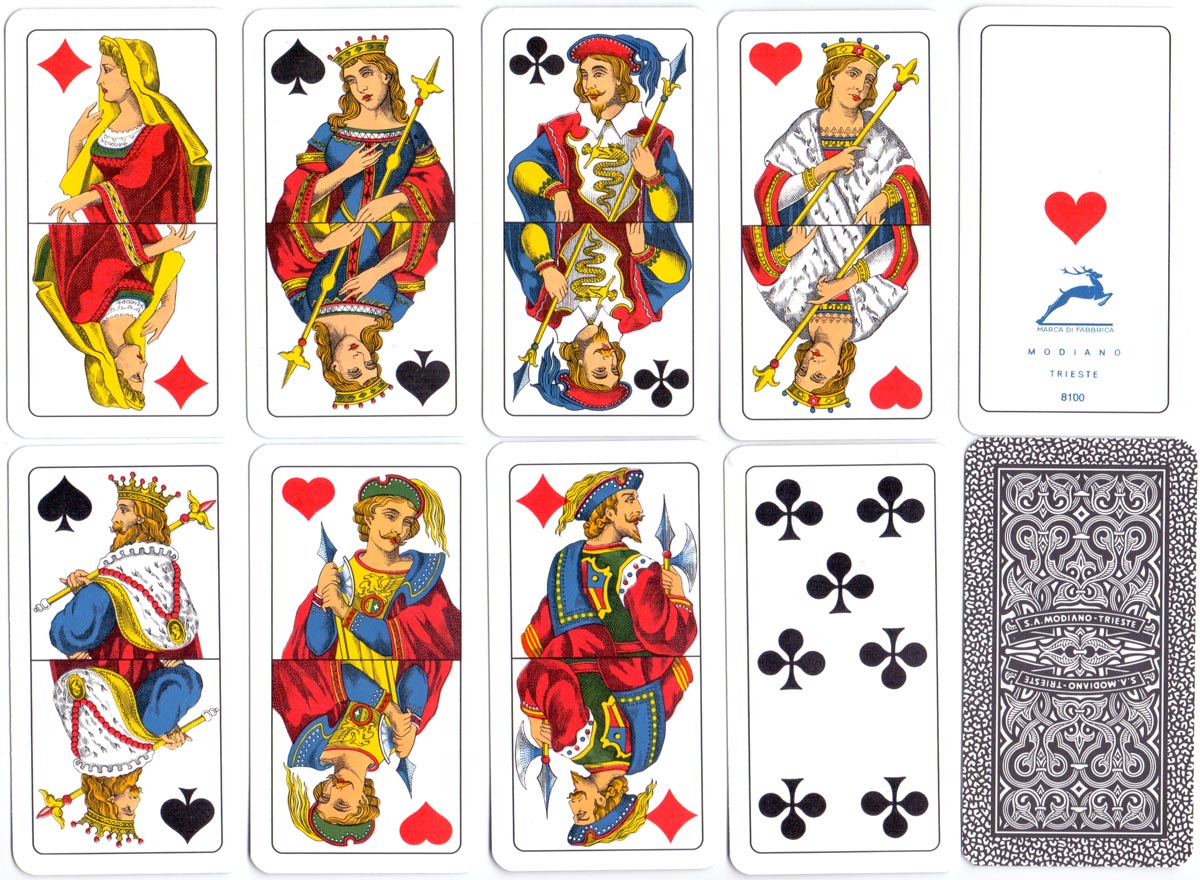
Above: Lombardy pattern by Modiano, Trieste, c.1981 (essentially unchanged from the example shown above).
Also known as Milanesi pattern
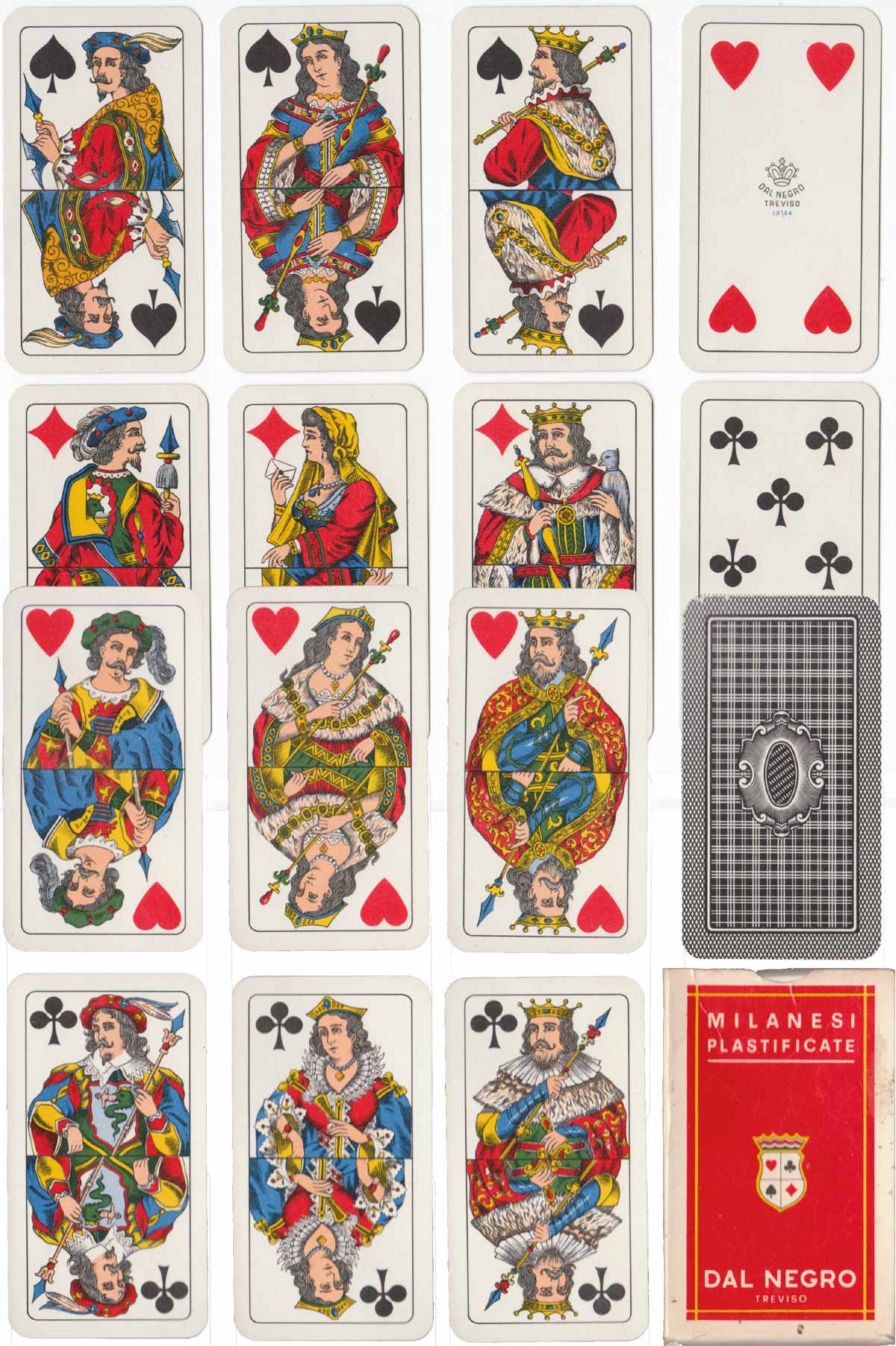
Above: Milanesi pattern by Dal Negro. Images courtesy Rex Pitts.
The pack has never had indices. The example shown below is from an uncut sheet by Edoardo Pignalosa, c.1952.
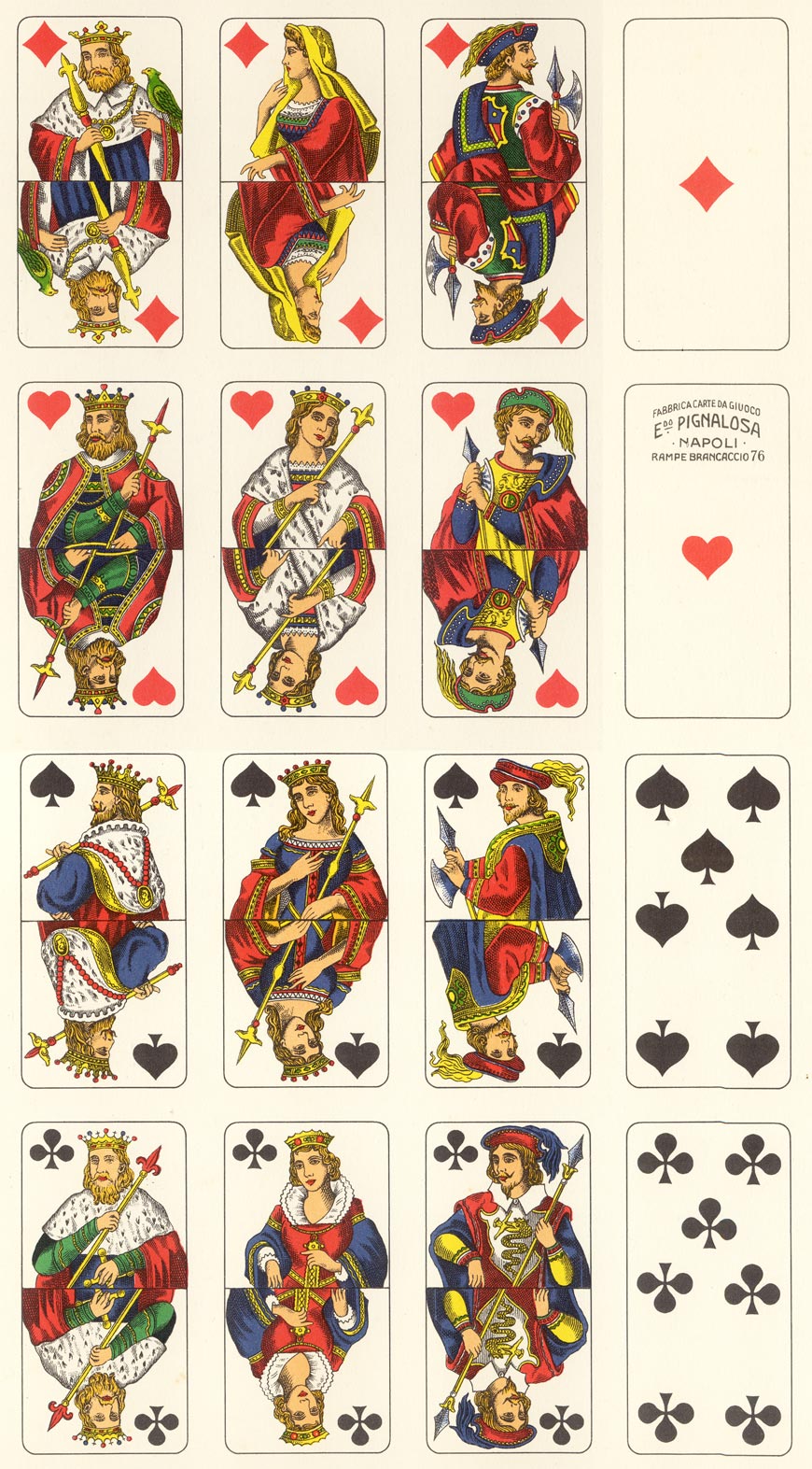
By Rex Pitts (1940-2021)
United Kingdom • Member since January 30, 2009
Rex's main interest was in card games, because, he said, they were cheap and easy to get hold of in his early days of collecting. He is well known for his extensive knowledge of Pepys games and his book is on the bookshelves of many.
His other interest was non-standard playing cards. He also had collections of sheet music, music CDs, models of London buses, London Transport timetables and maps and other objects that intrigued him.
Rex had a chequered career at school. He was expelled twice, on one occasion for smoking! Despite this he trained as a radio engineer and worked for the BBC in the World Service.
Later he moved into sales and worked for a firm that made all kinds of packaging, a job he enjoyed until his retirement. He became an expert on boxes and would always investigate those that held his cards. He could always recognize a box made for Pepys, which were the same as those of Alf Cooke’s Universal Playing Card Company, who printed the card games. This interest changed into an ability to make and mend boxes, which he did with great dexterity. He loved this kind of handicraft work.
His dexterity of hand and eye soon led to his making card games of his own design. He spent hours and hours carefully cutting them out and colouring them by hand.

Related Articles

Baracca & Burattini
Baracca & Burattini puppetry deck printed by Dal Negro, 1998.

Dal Negro Bridge set
Dal Negro Bridge set featuring old Vienna pattern courts.

Carte Romane
“Carte Romane” designed by Giorgio Pessione, 1973, celebrating the history of Rome.
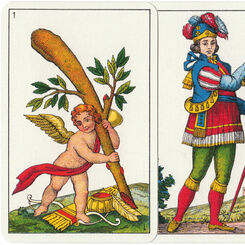
Sarde Pattern
Sarde pattern published by Modiano, c.1975, based on early XIX century Spanish model.
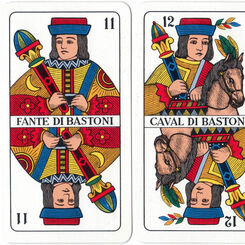
Triestine Pattern
The Triestine pattern is derived from the Venetian (Trevisane) pattern but with its own characterist...

Trentine Pattern
Trentine Pattern

Primiera Bolognese
Primiera Bolognese by Modiano, c.1975

Bergamasche Pattern
Bergamasche Pattern by Modiano, 1970s.
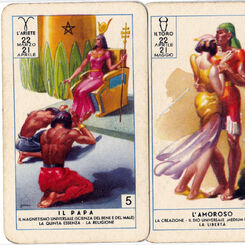
Il Destino Svelato Dal Tarocco
The Cagliostro Tarot was first published in 1912 as “Il Destino Svelato Dal Tarocco”.

Genovesi Pattern
Genoese pattern from Italy.

Club Bridge
Modiano’s ‘Club Bridge’ is a new edition of a stylish deck originally published in c.1895.

Modiano Patience
Patience cards published by Modiano, c.1945.

Piedmont Pattern
The Piedmont pattern is a very close relative to the French 'Paris' pattern. The courts are not name...

Trevisane pattern
The double-ended version of the ‘Trevisane’ pattern originated in the early 19th century.

Florentine Pattern
Originally one of several designs which emerged during the nineteenth century, the Florentine patter...

Small Tuscan Pattern
Small Tuscan Pattern

Brescia pattern
The Brescia pattern contains elements which come from a past age.

Sicilian Pattern
The Sicilian pack has a similar composition to the Neapolitan pack, and is small and squat in appear...

Neapolitan Pattern
Cartine da Gioco Vesuvio miniature Neapolitan pattern.
Most Popular
Our top articles from the past 60 days


